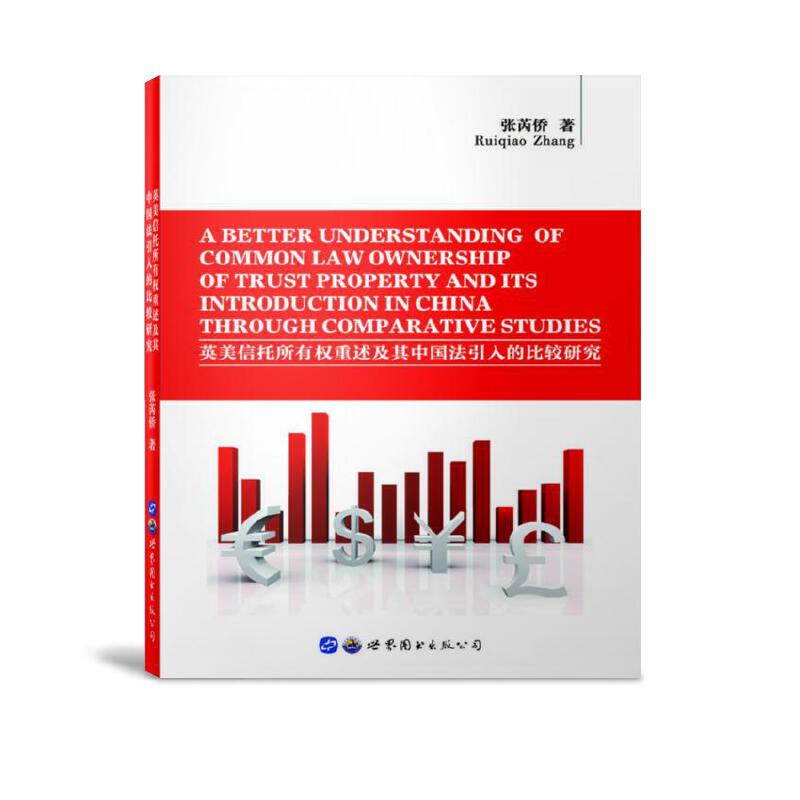- ISBN:9787519268060
- 装帧:平装-胶订
- 册数:暂无
- 重量:暂无
- 开本:其他
- 页数:208
- 出版时间:2019-09-01
- 条形码:9787519268060 ; 978-7-5192-6806-0
本书特色
信托,作为英美法系的产物,随着国际商事和金融的发展被广泛引入大陆法系。中国于2001年颁布信托法。传统普通法和衡平法下的双重所有权概念与大陆法的单一所有权制度的差异对信托法的法律移植提出了挑战。 本书能够帮助读者更好地理解信托财产的双重所有权制度,通过比较研究,探讨了信托在我国设立的*途径。 本书解析重述了英美法系的著名信托及其在英美法系中的双重所有权;分析了信托在民事管辖中的引入;考察了我国信托法的相关规定,并对其存在的问题进行批判性研究;*后提出“受托人所有权和受益人特殊债权”的中国信托构想并对中国信托法的发展、完善提出意见。
内容简介
信托,作为英美法系的产物,随着靠前商事和金融的发展被广泛引入大陆法系。中国于2001年颁布信托法。传统普通法和衡平法下的双重所有权概念与大陆法的单一所有权制度的差异对信托法的法律移植提出了挑战。本书能够帮助读者更好地理解信托财产的双重所有权制度,通过比较研究,探讨了信托在我国设立的很好途径。本书解析重述了英美法系的有名信托及其在英美法系中的双重所有权;分析了信托在民事管辖中的引入;考察了我国信托法的相关规定,并对其存在的问题进行批判性研究;很后提出“受托人所有权和受益人特殊债权”的中国信托构想并对中国信托法的发展、完善提出意见。
目录
作者简介
张芮侨(中国),加拿大麦吉尔大学法学博士;现就职于英国爱丁堡大学法学院,终身教职,研究生导师;2019年北京大学法学院访问学者。其教育背景多元化并涉猎众多法系:中国法、英国法、欧盟法和加拿大法;研究领域涵盖信托法、民商法、国际经济贸易法、国际金融及投资、比较法等。
-

中华人民共和国民法典 64开特种纸 红皮烫金版
¥5.8¥18.0 -

国富论:“现代经济学之父”亚当·斯密的传世名作
¥9.9¥38.0 -

法治在中国-制度.话语与实践-(修订版)
¥22.4¥32.0 -

中华人民共和国民法典
¥11.8¥28.0 -

中华人民共和国民法典
¥12.7¥39.8 -

圆圈正义
¥25.3¥46.0 -

法律的悖论(签章版)
¥31.4¥49.8 -

中国古代司法的精神
¥25.2¥36.0 -

简约法律的力量
¥23.8¥34.0 -

中国法律对东亚诸国之影响
¥14.1¥28.8 -

一看就懂的法律常识/李叔凡
¥16.1¥59.8 -

中华人民共和国宪法
¥1.7¥4.0 -

民法典
¥23.5¥42.0 -

法律常识一本全
¥9.5¥38.0 -

清朝监察立法之都及其历史镜鉴研究
¥12.4¥46.0 -

民法概要
¥33.6¥48.0 -

中华人民共和国劳动法
¥2.9¥4.0 -

人人都该懂点婚姻法
¥23.4¥65.0 -

罗翔讲刑法
¥14.7¥49.0 -

从《共同纲领》到“八二宪法”
¥27.5¥58.0













